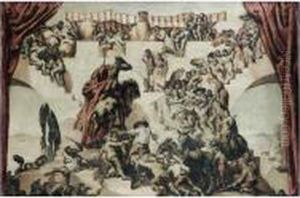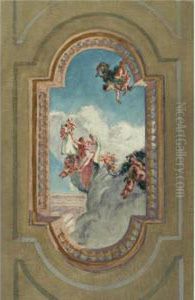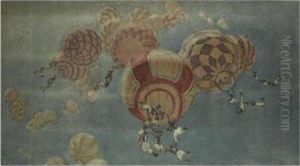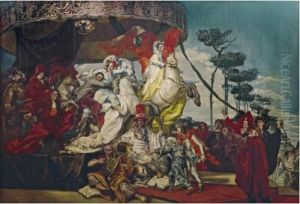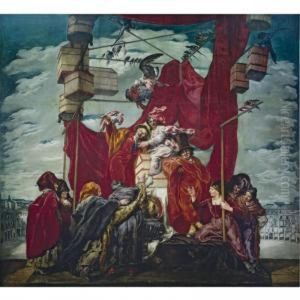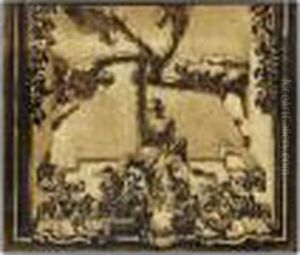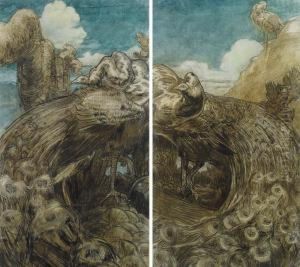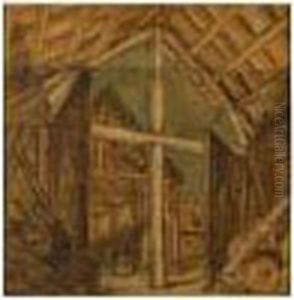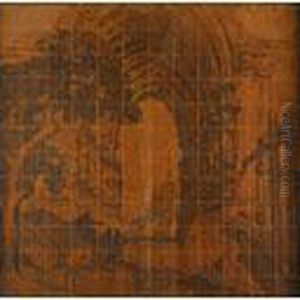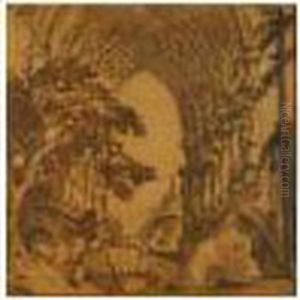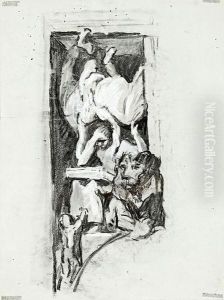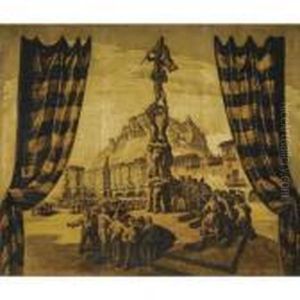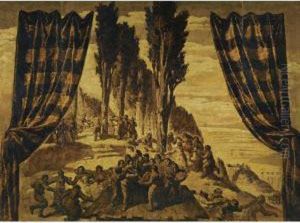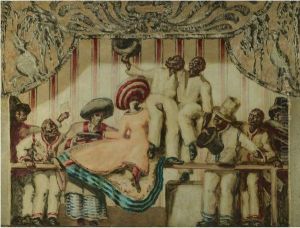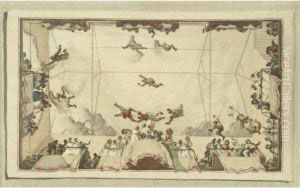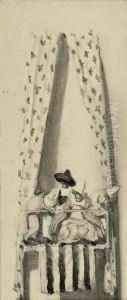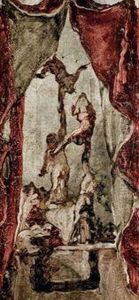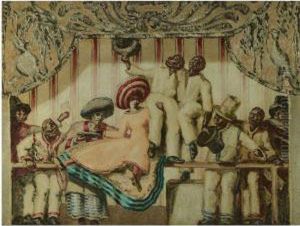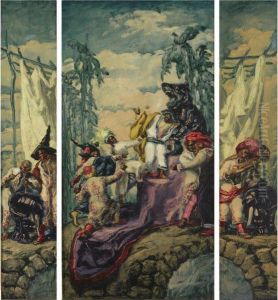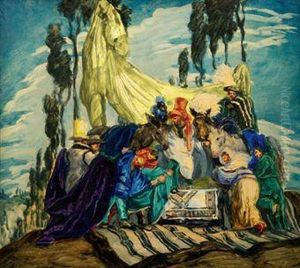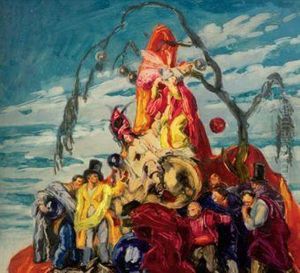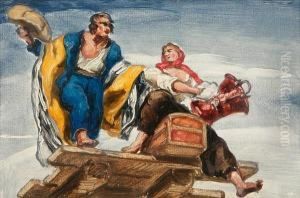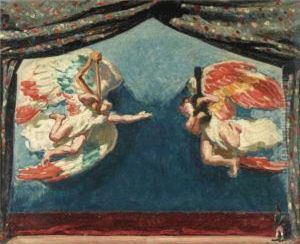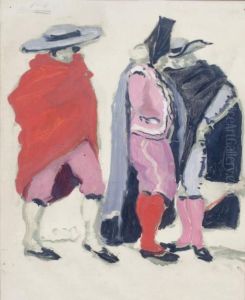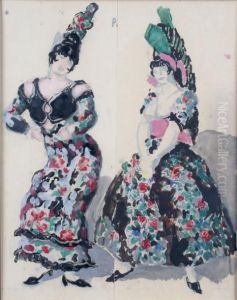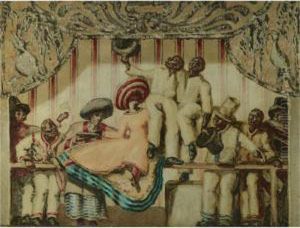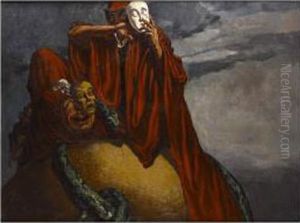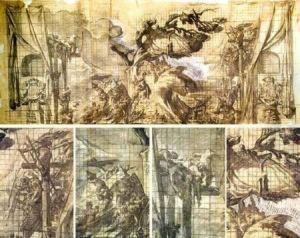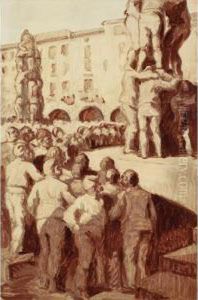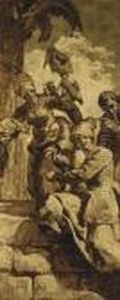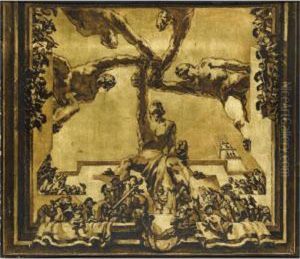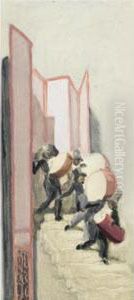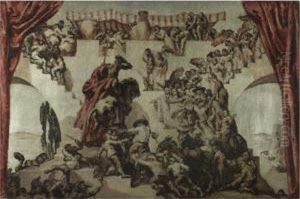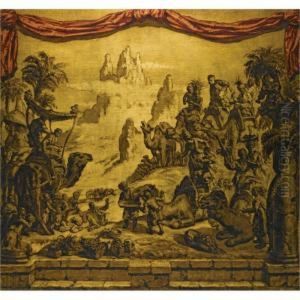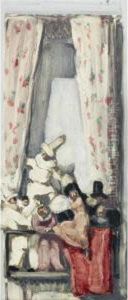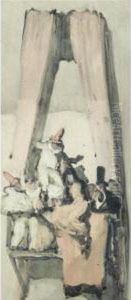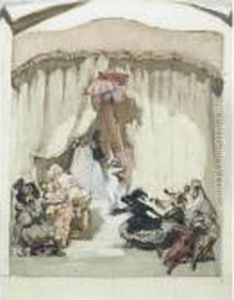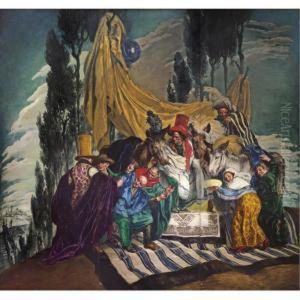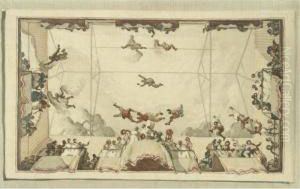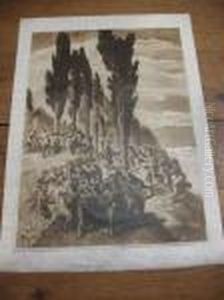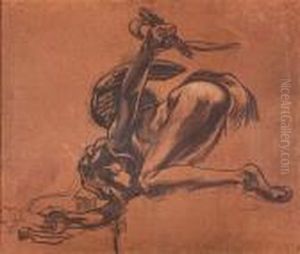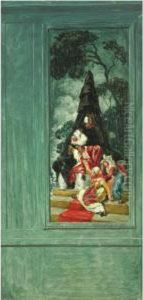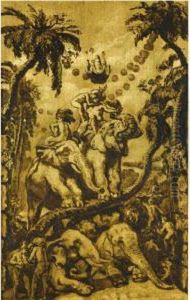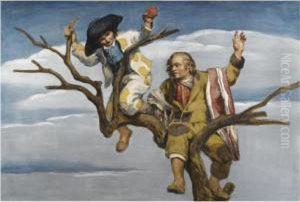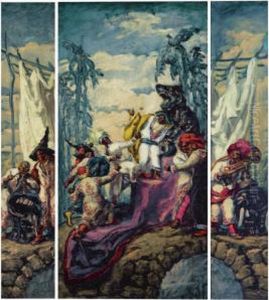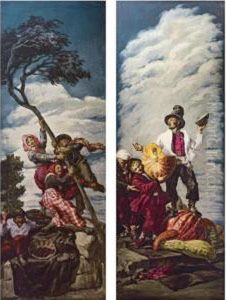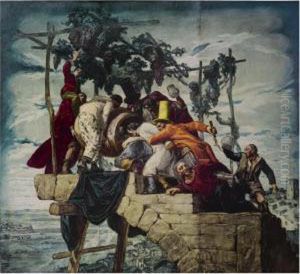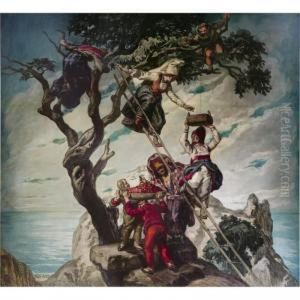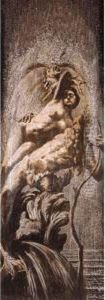Jose Maria Sert Y Badia Paintings
Jose Maria Sert was a distinguished Spanish painter, born in Barcelona on December 21, 1874. He was known for his monumental and dramatic mural paintings which adorned the walls of some of the most prestigious buildings in Europe and America during the late 19th and early 20th centuries. Sert's work was characterized by its grand scale, use of bold colors, and a blend of modern and classical styles.
Sert received his artistic training in Rome and Paris, where he was influenced by the Symbolist movement and the work of other muralists. Early in his career, he gained fame for his opulent and theatrical designs, which often featured historical and allegorical themes. His success was such that he became the preferred muralist for aristocrats and wealthy patrons, including decorating the homes of the Vanderbilts and the Waldorf Astoria hotel in New York.
In 1926, Sert's work reached a defining point when he was commissioned to replace the murals in the dome of the League of Nations building in Geneva, which had been previously painted by his friend, the artist Puvis de Chavannes. These murals were destroyed during the Spanish Civil War, but Sert was later assigned to recreate them.
Throughout his career, Sert maintained strong ties to his Spanish heritage, which often influenced his subject matter. Despite his international reputation, he held a significant role in the cultural life of Spain, and during the 1930s, his work was recognized by the Spanish government, which awarded him the title of Marquis of Sert.
Jose Maria Sert died on November 27, 1945, in Barcelona. His legacy is preserved in the murals that still exist today and in the influence he had on the art of mural painting. His works can be seen in public and private collections, as well as in situ in the buildings for which they were originally created.
